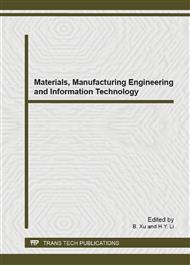p.198
p.202
p.206
p.210
p.214
p.218
p.222
p.226
p.230
Using a Hollow Braiding Technique to Prepare 316L Stainless Steel Braids as Coronary Stents
Abstract:
This study proposes a novel manufacturing method, a hollow braiding technique, to make reticular tubes. Coronary stents for coronary arteries have to have a size equal to the size of the arteries, and as a result, material and diameter of stents are both critical designed parameters. By using a hollow braiding technique and a braiding machine, 316L stainless steel fibers are made into coronary stents with an internal diameter of 3 mm, which meets the requirement of coronary arteries. The experiment results show that the hollow braiding technique can effectively braid reticular tubes with an internal diameter of 3 mm. In addition, variation in tooth number on the take-up gear can influence the braiding angle but does not influence the stability of the braiding structure and metal cover rate. In this study, the hollow braiding technique successfully produces coronary stents in the form of reticular tubes with a size equal to coronary arteries.
Info:
Periodical:
Pages:
214-217
Citation:
Online since:
March 2014
Authors:
Price:
Сopyright:
© 2014 Trans Tech Publications Ltd. All Rights Reserved
Share:
Citation:


